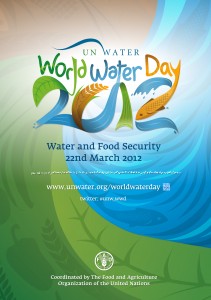 What is a water footprint?
What is a water footprint?
Freshwater is a scarce resource; its annual availability is limited and demand is growing. The water footprint of humanity has exceeded sustainable levels at several places and is unequally distributed among people. There are many spots in the world where serious water depletion or pollution takes place: rivers running dry, dropping lake and groundwater levels and endangered species because of contaminated water. The water footprint refers to the volumes of water consumption and pollution that are ‘behind’ your daily consumption. (source: http://www.waterfootprint.org/?page=files/YourWaterFootprint)
30 % of the food produced worldwide is wasted. Some spoils in transit from farm to fridge, some spoils after purchase, and excessive consumption of food is also included. You can help reduce this figure by being more aware when making food purchases:
- Plan meals for the week and only buy what you need, so nothing goes bad before you can consume it. Be wary of grocery deals that promote buy 2 get 1 free and so forth, it may be free, but will you be able to consume it before it spoils?
- Buy products that use less water to produce (Meat, beef especially, and dairy products use a large amount of water beginning with feeding and watering the animals all the way to your plate).
- Find cleaver ways to reuse leftovers throughout the week.
- Don’t throw out fruits and vegetables because of small blemishes on a small part-just remove the spot and the rest should be fine for consumption (Shop at Farmer’s Markets that don’t have to conform to retail standards of appearance, but still offer safe and good-tasting items)
Celebrate World Water Day March 22nd and visit www.unwater.org






